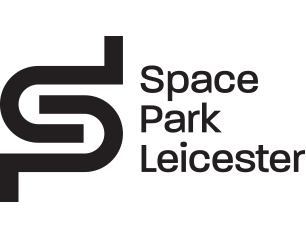Leicester scientists celebrate anniversary of game-changing satellite

Leading experts from the University of Leicester are marking two decades of ground-breaking cosmic exploration as the Neil Gehrels Swift Observatory celebrates its 20th anniversary.
Launched on 20th November, 2004, Swift has become a cornerstone of modern astronomy, capturing the most extreme events in the universe – from gamma-ray bursts to the destruction of stars by black holes.
Key members of the University’s Swift team gathered at the School of Physics and Astronomy to reflect on the observatory’s remarkable achievements and their role in its success.
Dr Phil Evans, an astrophysicist at Leicester and the Principal Investigator of the Leicester Swift team, spoke about the satellite’s unparalleled speed in capturing the aftermath of cosmic explosions.
He said: “Swift has transformed how we study gamma-ray bursts.
“Before Swift, it would take around eight hours to start gathering data on a new GRB and it gets a lot fainter in that time, which limits what we can tease out of the data.
“Even worse, most of the extreme and interesting physics takes place soon after the explosion. Swift can detect a new GRB with its ‘BAT’ instrument and then automatically react to it, so that our X-ray and UV telescopes start collecting data within two minutes, which makes a massive difference!”
This mixture of rapid slewing and multiple telescopes that study different parts of the light spectrum is unique to Swift and has enabled it to detect nearly 1,800 GRBs, many of which have been quickly followed-up by observers using ground-based telescopes.
Highlights from among this impressive sample include a burst that was over 6 billion light years away, but bright enough to be seen with the naked eye; one from when the universe was just 500 million years old – at the time the most distant object ever seen by humans – and recently the so-called BOAT (brightest of all time): a GRB so bright that it is probably a unique event not just for Swift but in the history of human civilisation.
The UK has played a central role in these discoveries and is a key partner in the Swift mission, which is led by NASA and has partners in the US and Italy as well as the UK.
The University of Leicester’s contribution to the mission has been significant. The team developed key technology for Swift’s X-ray telescope and continues to lead the UK’s data analysis efforts through the UK Swift Science Data Centre.
The UV/optical telescope was built at the Mullard Space Science Laboratory, while the University of Leicester provided the camera and associated systems for the X-ray telescope; both institutes continue to supply operational and data analysis support to the mission and the wider community of scientists.
Leicester also developed and provides the UK Swift Science Data Centre, a facility which goes beyond the normal remit of a data centre.
Dr Kim Page, a research scientist who joined the Leicester Swift team before the launch, said: “To make the most of Swift’s rapid response, we need to analyse the data really quickly as well, and share the results so that people can decide how and when to next observe it – and that has to be done accurately and carefully.
“It’s crucial for coordinating follow-up observations and making the most of Swift’s unique capabilities.”
As it hits the mature (for a space telescope) age of 20, Swift is still a vital implement in the astronomer’s toolkit.

one of the most distant objects ever observed. CREDIT: NASA/Swift/P. Evans (University of Leicester)
NASA’s latest decadal astrophysics survey was completed last year and explicitly identified Swift as an essential facility for the science in the decade to come.
Dr Andy Beardmore is responsible for the ongoing calibration of the X-ray telescope and was pleased to see this recognition.
He said: “Astrophysics is breaking new ground at the moment, thanks to amazing new technologies. The LIGO, Virgo and KAGRA facilities can detect tiny ripples in space-time called gravitational waves and the IceCUBE and KM3NeT neutrino observatories, and these give us completely new ways of probing the physics of the cosmos.
“But to get the best science from these, we need to detect the electromagnetic radiation – light – coming from them as well. So far there’s only been one gravitational wave detection and one high-energy neutrino burst with electromagnetic counterparts – and Swift found both of those counterparts.
“As those new facilities mature, and as new observatories such as the Vera Rubin Observatory start taking data, we need something like Swift to exploit what they detect, and the only thing like Swift is Swift!”
Swift’s growing legacy can be seen not only in the science that it has produced, but in the next generation of space missions which are inspired by its capabilities and the new questions it has asked.
The Chinese Einstein Probe mission and the Sino-French SVOM observatory both launched this year to study GRBs and other transients, and their technology and design was inspired and influenced by Swift – and experts from the University of Leicester played key roles in their development.
Dr Evans said: “It’s not just in new technology that the impact of Swift can be seen but in the development of people as well. More than 15 students have obtained PhDs from the University of Leicester, using Swift data for their projects – and more are on the way.
“Some of these are now lecturers themselves, others have taken their skills into the industrial sector, all of them have gained key scientific skills that our economy is in need of, from their time working with Swift.”
The anniversary comes as Swift’s legacy continues to influence the future of space exploration. Leicester experts played a key role in the development of new international space missions inspired by Swift’s success, and the team is committed to continuing its pioneering work as Swift heads into its third decade.
Dr Beardmore added: “Swift may be 20, but it’s still full of health and vigour.”
Dr Page said: “As long as Swift is producing data it’s producing science, teaching us about the extremes of physics; and we’ll be here to exploit it.”
Dr Evans added: “We’re excited to see what the next decade brings as we push the boundaries of our understanding of the universe.”
Main image: The Neil Gehrels Swift Observatory in the clean room at NASA Goddard Space Flight Center; with Neil Gehrels standing in front of it. CREDIT: NASA.


